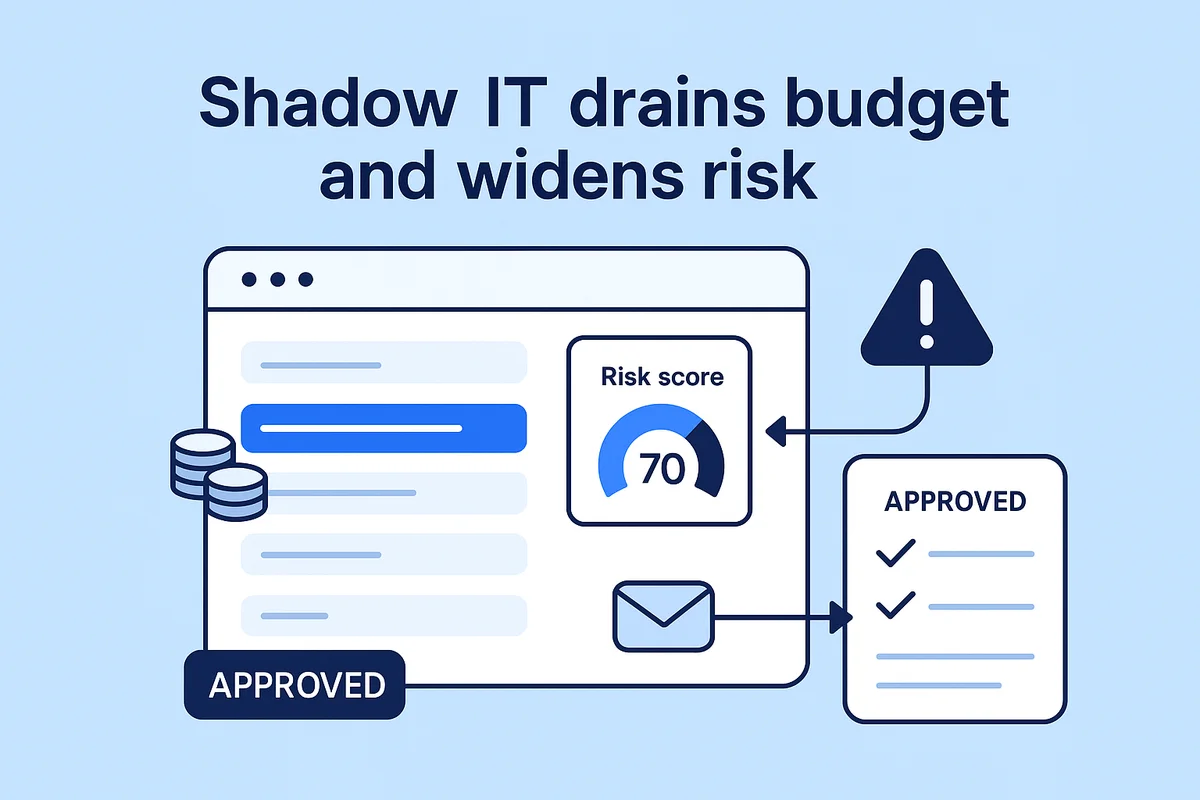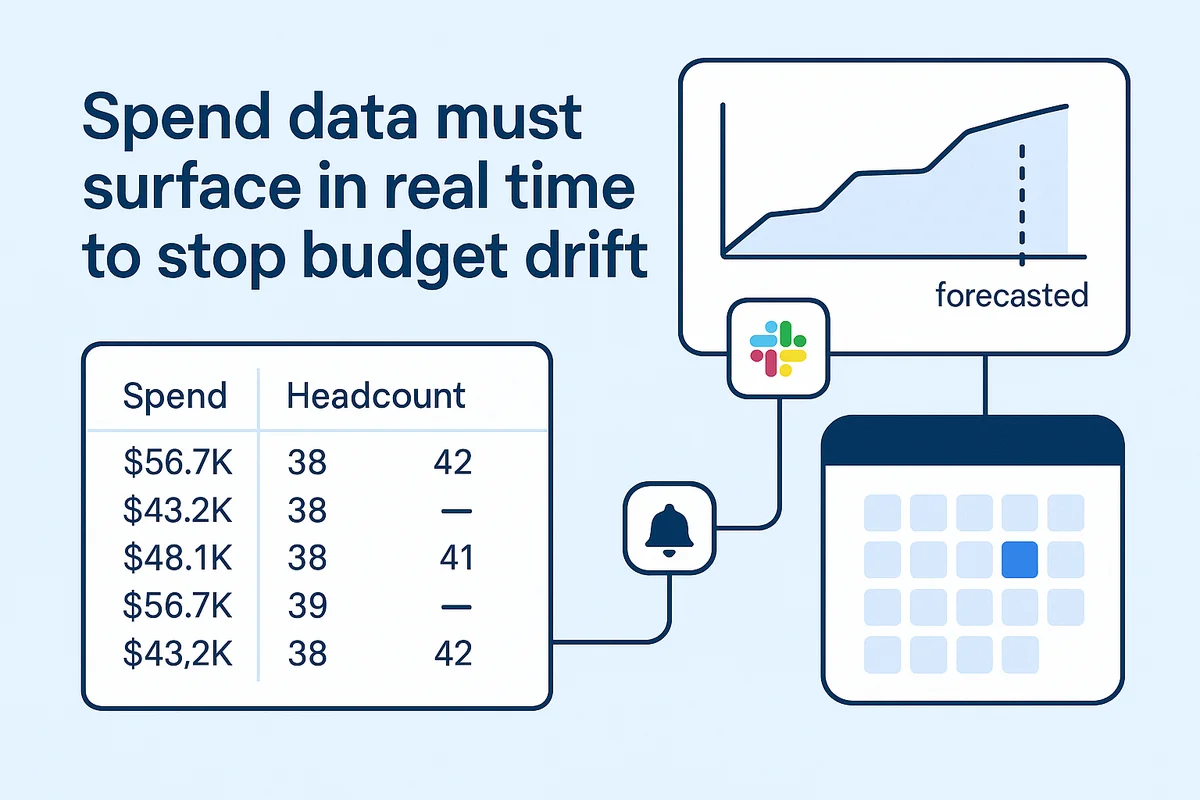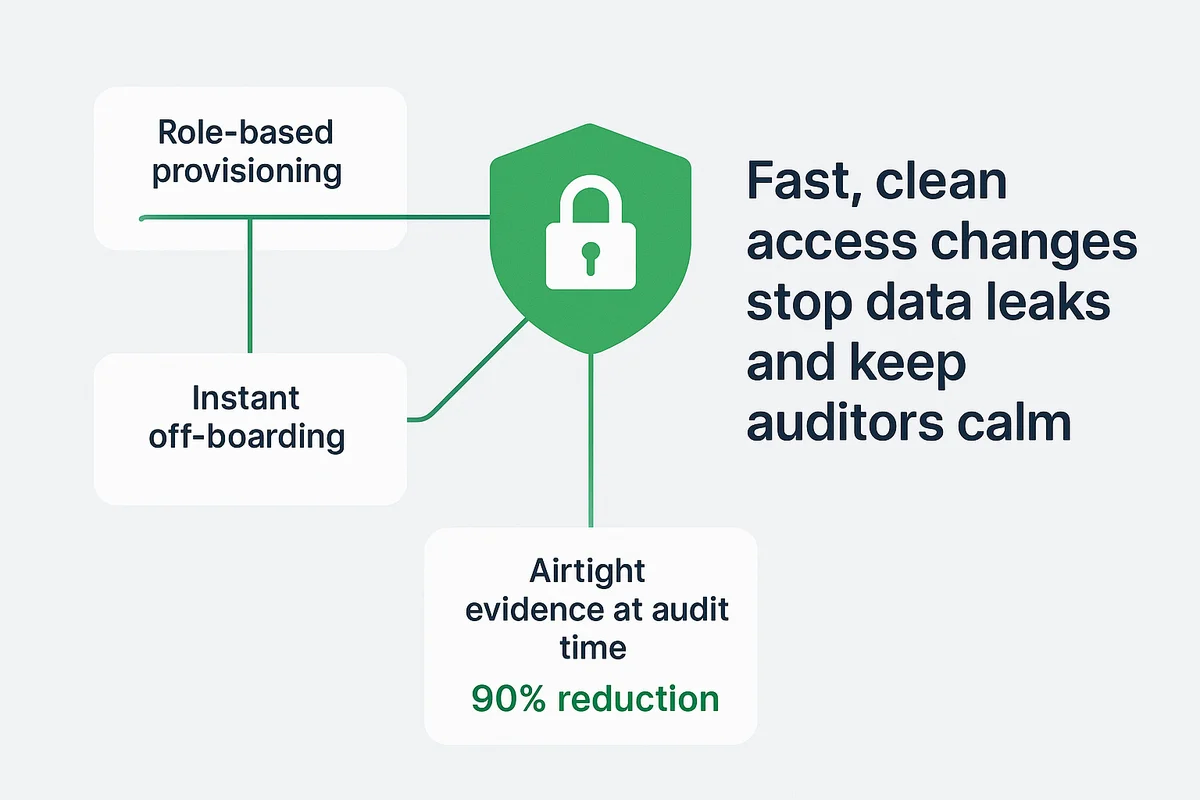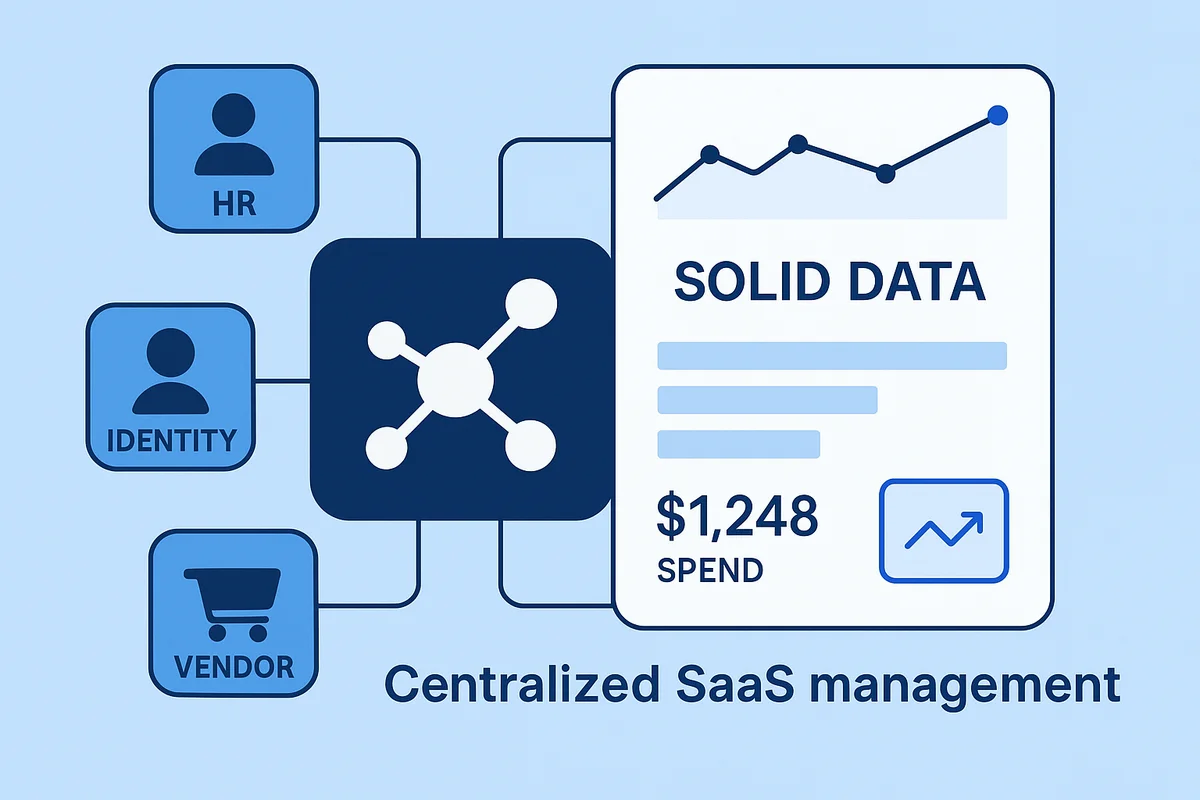Key Features To Look for in a SaaS Management Platform

SaaS proliferates faster than any spreadsheet can track. Apps appear after every team meeting, seats multiply, invoices pile up, and offboarded employees still have access. IT feels blind, finance watches budgets drift, and security dreads audits.
A unified platform connects to HRIS, Okta, Azure AD, ERP feeds, and vendor APIs, streaming events in real time. This feed uncovers shadow IT, flags idle licenses, maps spend by SKU, and triggers access workflows, so teams stop hunting for information and start acting on it.
These connections turn SaaS management into a control layer that cuts waste, surfaces risk, and secures the user lifecycle.
Table of Contents
- Connect Everything for Clean Data
- Spot Shadow IT Before It Spreads
- Right-Size Licenses With Real Use
- Stay Ahead of Renewals and Spend
- Lock Down Access and Meet Audits
- Conclusion
- Audit your company's SaaS usage today
Connect Everything for Clean Data
Granular SaaS data begins with broad, direct connections.
A management platform should tap the systems that already track hires, logins, and spending. It links to a Workday export, listens to the Okta audit stream, pulls in ERP invoices, and hits each vendor API when a license changes.
Webhook events beat batch polling. When Salesforce fires a “new seat” event, the platform can flag the extra cost in seconds rather than wait for a nightly job. The same feed lets IT trigger an auto-reclaim rule the moment a contractor drops off the HR roster. Data stays fresh, and actions keep pace.
Breadth matters because each system holds a different slice of truth. HR handles titles and start dates, identity stores group membership, finance lists contract terms, and vendor APIs reveal entitlements the invoice never shows. Combining those feeds creates a complete view of who should have what and what it costs.
- HRIS feed drives joiners-movers-leavers logic
- Identity provider events map real access to intended roles
- ERP and card feeds sync spend to cost centers in real time
- Vendor APIs expose SKU-level rights and usage caps
Quality rises with integration depth. The deeper the API call, the smaller the manual catch-up job, all the way from automatic invoice ingestion to real-time license reconciliation.
Procurement now walks into vendor talks holding exact counts of Pro, Standard, and Free SKUs. Finance trusts the numbers because access events, payroll data, and invoices all agree. The result is fewer audit surprises, tighter renewal cycles, and a data layer that stays clean without weekly exports.

Spot Shadow IT Before It Spreads
Shadow IT drains budget and widens risk. Most teams don’t spot an unapproved tool until it shows up on an expense report. The right SaaS management layer changes that.
Lightweight browser extensions tag each web session and send domain details almost in real time. Pulling sign-in logs from Okta and Azure AD exposes apps that never hit the catalog. Firewall and DNS data trace traffic, and a CASB such as Microsoft Defender for Cloud Apps checks what’s moving in and out. Every signal flows into one engine that compares each domain to the approved vendor list and raises a flag within hours.
- Risk score considers data residency, OAuth scopes, and known breaches
- Slack or email alert goes out when a new app crosses the threshold
- Workflow opens a ServiceNow ticket and tags the app owner
- A read-only feed to Splunk preserves evidence for audits
Procurement taps the same data. Hidden seats and usage hours roll into a clear table they can hand to vendors.
Alert fatigue stays low by sticking to simple thresholds. Green marks low risk, yellow medium, red high. Any app left red for seven days without action lands in the CISO’s inbox. Security, finance, and IT stay on the same page without adding headcount.

Right-Size Licenses With Real Use
Idle seats drain budgets. Smart SaaS tools pull raw usage events straight from each app and turn them into clear next steps.
Seat-level login counts tell IT who signs in daily, weekly, or not at all. Feature heat maps flag pricey add-ons nobody uses. When inactivity crosses a set threshold, the platform can automatically pause or downgrade the seat.
Key signals feed a forecast engine that helps finance map future spend:
- Historical logins predict renewal need down to the seat
- Uptake curves show whether a rollout sticks or stalls
- Scenario sliders test the cost impact of moving users to lower tiers
- Alerts pop when premium features cross a chosen usage line
Spreadsheets and late-night audits vanish. The system ties into HR data so new hires land on the right tier, while departing staff lose paid seats before the goodbye cake cools. API hooks send tasks to ITSM, turning reinstatement into a one-click job when someone returns from leave.
A long view of usage matters as much as the daily pulse. Twelve-month baselines surface seasonal swings, campaign spikes, and real adoption after training pushes. With that history in hand, procurement steps into renewals holding numbers that beat vendor estimates every time.
License optimization is not about squeezing people; it is about matching cost to real need. Usage analytics supply the proof, the policy engine applies it, and finance watches the savings add up month after month.

Stay Ahead of Renewals and Spend
Spend data must surface in real time to stop budget drift. A modern SaaS management platform pulls in every invoice, card swipe, and ERP export as soon as it lands. The system tags each charge, converts foreign currency at the spot rate, and spreads annual contracts across the right months so teams see actual burn instead of a lump sum.
Machine learning pulls six months of history, then plots cost against headcount and usage. If the forecast jumps 10 percent over plan, the tool nudges finance through Slack, email, and the ITSM queue. No pivot tables, no waiting for month-end close.
Renewal dates sit on a shared calendar that pushes reminders at 180, 90, and 30 days. Each entry shows the vendor owner, last contract, and usage trend.
Daily variance cards call out anything that breaks policy. A surprise foreign transaction fee? Flagged. An annual prepaid charge booked as monthly gets re-classified automatically. Finance pipes the cleaned data straight into Power BI for board decks without touching CSVs.
- Key spend controls that cut noise:
- Live invoice ingestion with tax and FX tagging
- Amortized cost view that matches expense recognition rules
- Alert rules tied to budget thresholds, not static limits
- Renewal calendar hooks for Slack, email, and ITSM
- Forecast charts that model headcount growth and tier shifts
IT sees the same numbers. When budget alerts fire, governance stops new seat requests until spending drops back inside the guardrails. Real-time visibility, shared data, and early action turn renewals from a scramble into a planned negotiation.

Lock Down Access and Meet Audits
Fast, clean access changes stop data leaks and keep auditors calm. A modern SaaS management platform delivers that by doing three things: role-based provisioning, instant off-boarding, and airtight evidence at audit time.
HR or IT selects a job-code template that maps to SaaS groups and feature sets. When payroll records flag a new engineer, the platform fires a webhook and spins up GitHub, Jira, and Slack accounts in under 30 seconds. No tickets, no pasted passwords. On exit, the same chain pulls OAuth tokens, reassigns project assets, and locks shared drives before the badge system updates.
Shopify’s security team showed what “good” can look like. After adopting Okta Lifecycle Management plus a SaaS automation layer, they dropped average off-boarding time from two hours to under a minute. Internal audits later recorded a 90 percent cut in orphaned admin seats, shrinking their SOC 2 scope and the billable hours that come with it.
Logs matter just as much. Every grant, revoke, and privilege tweak lands in an immutable trail ready for ISO 27001 or HIPAA review. The platform streams events to Splunk and keeps a normalized copy for three years, so security isn’t hunting for screenshots when an auditor shows up.
Controls that adapt to risk close the loop:
- MFA checks for every privilege elevation
- Quarterly access review packets routed to managers with one-click attestation
- Geofence rules that pause tokens when logins appear from unexpected regions
- Vendor questionnaire templates legal can send and track without email threads
Finance teams like it too because each template carries cost limits. If a contractor tries to grab an Adobe seat outside the project budget, the request waits until finance signs off.
Teams that used to spend days exporting CSVs now hand regulators a zip file in under five minutes. Less drift, fewer surprises, and a compliance posture that grows with every new app in the stack.

Conclusion
A single platform plugs into HR, finance, identity, and vendor systems, pulls activity data, and lets teams cut both waiting and busywork. It uncovers shadow apps so risk teams can act quickly. It tracks every seat and feature, flags waste, and suggests swaps before cash drains away. It shows live spend, projects renewals, and keeps the board in the loop. It locks down access and documents compliance with a few clicks. Procurement, IT, and security all work from the same playbook.
Modern SaaS management hinges on solid data, clear costs, safe access, and control from day one.

Audit your company’s SaaS usage today
If you’re interested in learning more about SaaS Management, let us know. Torii’s SaaS Management Platform can help you:
- Find hidden apps: Use AI to scan your entire company for unauthorized apps. Happens in real-time and is constantly running in the background.
- Cut costs: Save money by removing unused licenses and duplicate tools.
- Implement IT automation: Automate your IT tasks to save time and reduce errors - like offboarding and onboarding automation.
- Get contract renewal alerts: Ensure you don’t miss important contract renewals.
Torii is the industry’s first all-in-one SaaS Management Platform, providing a single source of truth across Finance, IT, and Security.
You can learn more about Torii here.
Frequently Asked Questions
To spot Shadow IT, utilize lightweight browser extensions that tag each session and send domain details in real time, alongside sign-in logs from identity providers.
Integrating SaaS management platforms centralizes data, cuts costs, exposes hidden risks, and streamlines compliance, ensuring accurate visibility and control across teams.
By pulling in real-time spending data from invoices and ERP systems, a SaaS management platform monitors expenditures, providing alerts when costs exceed budget thresholds.
Utilize seat-level login data and feature heat maps to assess usage patterns, enabling automatic downgrades or pauses for idle licenses, aligning costs with actual needs.
Automation in SaaS management streamlines onboarding, offboarding, and access control, significantly reducing time spent on manual tasks and improving compliance and security.
Implement a shared renewal calendar that sends reminders for upcoming contract dates and tracks usage trends to facilitate proactive negotiations with vendors.
Clean data is crucial as it provides accurate insights for decision-making, enhances compliance visibility, and ensures effective management of resources across the organization.

